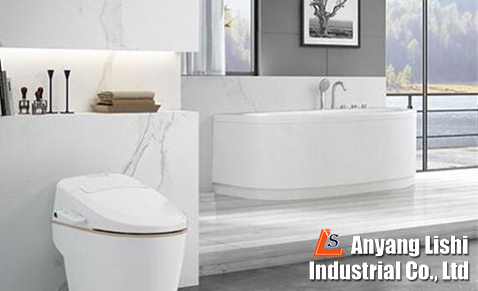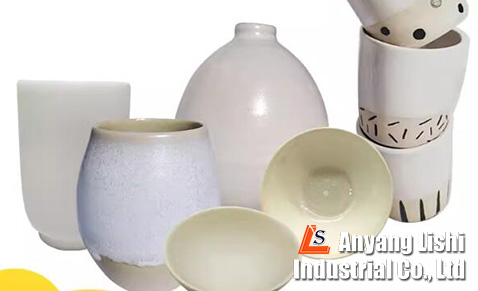
Soda feldspar, also known as sodium feldspar, is a crucial component in ceramic manufacturing processes. It is widely utilized in various forms and particle sizes to impart specific properties to ceramic products, glazes, and other applications. Let’s delve into the role and advantages of soda feldspar in ceramics, particularly focusing on its different mesh sizes and applications:
100 Mesh and 200 Mesh: Soda feldspar with particle sizes of 100 mesh and 200 mesh is commonly used in ceramic manufacturing. These finer grades of soda feldspar are incorporated into ceramic bodies to enhance plasticity, improve workability, and facilitate the formation of a dense and uniform structure during firing. They contribute to the overall strength, durability, and aesthetic appeal of ceramic products such as tiles, sanitaryware, and tableware.

325 Mesh: Soda feldspar with a particle size of 325 mesh is predominantly employed in ceramic glaze formulations. The finer particle size ensures better dispersion and uniform coverage of the glaze material over the ceramic surface, resulting in smoother finishes and enhanced decorative effects. Additionally, 325 mesh soda feldspar aids in controlling the melting behavior and surface tension of glazes, leading to improved gloss, color development, and surface durability.

Sintered Stone Production: In addition to ceramic applications, soda feldspar is also utilized in the production of rock slabs used for countertops, flooring, and decorative purposes. Its unique combination of hardness, resistance to abrasion, and attractive mineralogical characteristics makes it an ideal material for creating durable and aesthetically pleasing surfaces in residential and commercial settings.

Fluxing Properties: One of the primary advantages of soda feldspar in ceramics is its excellent fluxing properties. As a flux, soda feldspar lowers the melting temperature of ceramic raw materials, promoting the formation of a vitreous phase during firing. This results in improved sintering, densification, and bonding between particles, leading to enhanced strength, density, and mechanical properties in the fired ceramic products.
Thermal Stability: Soda feldspar exhibits high thermal stability, making it well-suited for use in ceramic formulations subjected to elevated temperatures during firing. Its ability to withstand thermal shock and cyclic heating ensures minimal deformation or cracking of ceramic products, contributing to their dimensional stability and reliability in service.
Chemical Inertness: Another advantage of soda feldspar in ceramics is its inherent chemical inertness. It does not react with other ceramic raw materials or glaze components, ensuring stability and consistency in the composition of ceramic bodies and glazes. This property is essential for achieving desired firing outcomes, color development, and surface characteristics without unwanted reactions or defects.
Color Enhancement: Soda feldspar can enhance the coloration of ceramic products and glazes when used in appropriate proportions. During firing, it acts as a flux and modifier, influencing the color response of ceramic oxides such as iron, titanium, and chromium. By adjusting the soda feldspar content, ceramicists can achieve a wide range of colors, shades, and surface effects in their finished pieces, enhancing aesthetic appeal and design versatility.
Versatility and Compatibility: Soda feldspar is highly versatile and compatible with various other ceramic raw materials, fluxes, and additives. Its flexible nature allows for precise formulation adjustments to meet specific product requirements and performance criteria. Whether used in clay bodies, glaze recipes, or rock slab compositions, soda feldspar contributes to ceramic products’ overall quality, functionality, and marketability across diverse applications and industries.
In conclusion, soda feldspar plays a pivotal role in ceramic manufacturing due to its fluxing properties, thermal stability, chemical inertness, color enhancement capabilities, versatility, and compatibility with other materials. Its different mesh sizes cater to specific applications, ranging from ceramic body formulations to glaze preparation and rock slab production. As a key ingredient in ceramics, soda feldspar continues to offer valuable advantages to artisans, designers, and manufacturers seeking to create high-quality, durable, and aesthetically pleasing ceramic products for various markets and applications.

Whether you have questions or you would just like to say hello,Contact us!
Call Anytime:
+86 15837207537Send E-mail:
info@lsakminerals.comAddress:
Anyang City , Henan Province, China.